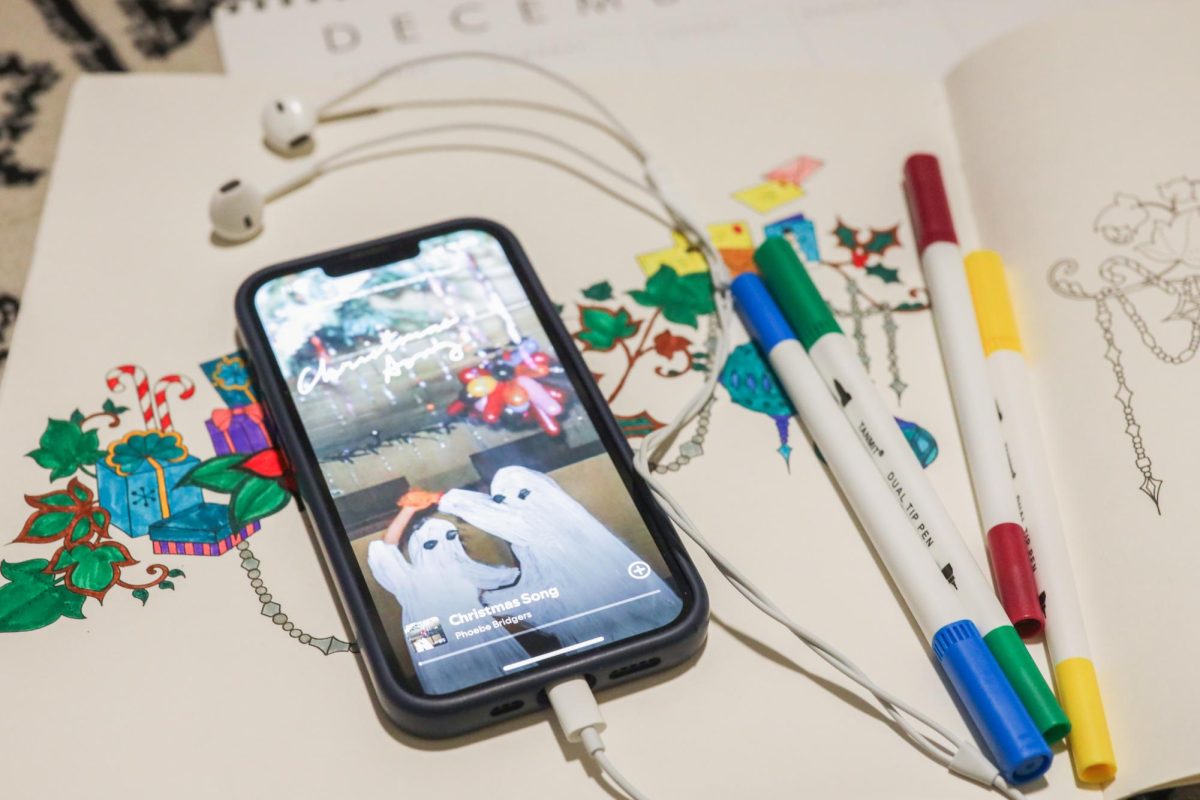GW’s student-run art space, Gallery 102, isn’t just for art anymore – starting this week, it will become a refuge and resource for students in the middle of finals season.
The newest exhibition, “Sensorium: The Art of Perception,” which opens Thursday, will transform the gallery’s normally still atmosphere into an interactive, multi-sensory space for meditation, yoga and relaxation.
The project’s curator, Roxanne Goldberg, an art history major and senior at GW, said engaging one’s body with the artwork in the space is integral to the exhibition and its accompanying symposium, which will bring a range of scholars, health professionals, artists and instructors to the gallery for a broad discussion about wellness.
“A big motivating factor to me was saying, ‘How can we create a space where people can just kind of zone out, not have judgments and also have access to resources?’ Which is what the symposium does,” Goldberg said.
The exhibition itself will feature interactive pieces like a gamma wave installation – a sound machine that emits the highest-frequency waves produced by the brain. Goldberg said gamma waves increase concentration, problem-solving skills and memory retention, helping the gallery become a go-to spot to “recharge the brain before or in between finals.”
A major component of the exhibition is a cushioned reading space where visitors can lounge, flip through books about Buddhism and Eastern philosophy and allow themselves to be enveloped in the radiating gamma waves.
From Thursday to Friday, Gallery 102 will be home to presentations, lectures and interactive workshops, which will aim to give students the experience and resources to better handle stress while exposing them to therapeutic ideals rooted in Eastern cultures and philosophies.
Caitlin Cartwright, an artist and global health worker based in D.C., is one of the speakers Goldberg enlisted for the symposium.
Through her work, which has taken her to countries like Madagascar and Namibia, Cartwright said she has seen the effects that art can have on the wellness of both individuals and entire communities. Art is often rooted in cultural traditions, she said, and accessing those customs can help community members connect and grow.
“It has all these really great secondary effects – it can help become an income maker for people, it helps people tell their own stories in a community where maybe there’s been a circumstance like a conflict or some sort of gender-based violence,” Cartwright said. “It’s a powerful thing to be able to create something just from yourself.”
Yoga instructor Gopi Kinnicutt, who will host breathing and spiritual workshops on Friday as part of the symposium, said the body’s connection to art and creativity is equally as important as its connection to the soul.
“The whole self means kind of nourishing the physical, the mental and the emotional as well as the spiritual side of one’s personal being,” Kinnicutt said. “When you access your spiritual essence, your natural creativity comes through.”
According to Kinnicutt’s teachings, interactive “art” comes in the form of the physical movements and graceful hand gestures associated with yoga. But for others, like the artists Goldberg chose for the exhibition, this idea is grounded in how the body interacts with the artwork and the gallery itself.
Ceramic pieces, crafted by master of fine arts candidate Ryan McDonnell, will be placed on different sized pedestals and filled with aromatherapy oils. Goldberg said the pedestals will force visitors to move their bodies close to the pots to smell the oils and experience the full effect of the display.
And in conjunction with the exhibition, Goldberg hopes the symposium will further student interaction with the space and give them a new outlet and new tools to cope with anxiety and stress.
“A lot of speakers are leaving materials, so it is a place where students can come and seek resources that, you know, maybe someone isn’t comfortable going to the counseling center or whatever, and we want to open up an opportunity for that,” Goldberg said.







